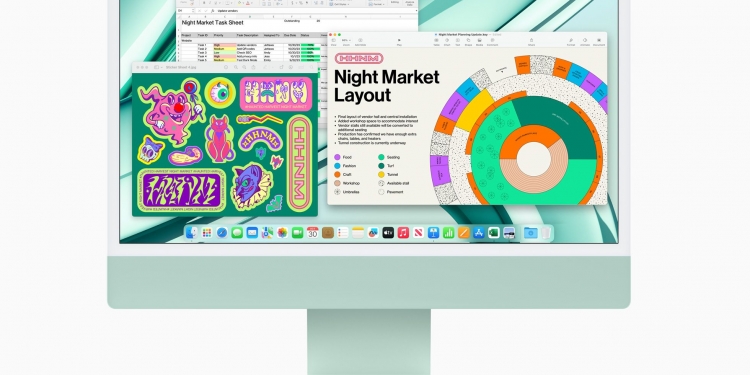Apple unveiled its latest M3-powered Macs during its “Scary fast” event today and they have introduced a refresh of its 24″ iMac all-in-one desktop computer. The 24″ iMac was first introduced in April 2021 with an Apple M1 chip and it now gets a performance upgrade with the all-new Apple M3 chip.
Apple M3-powered iMac 2023 Malaysian pricing
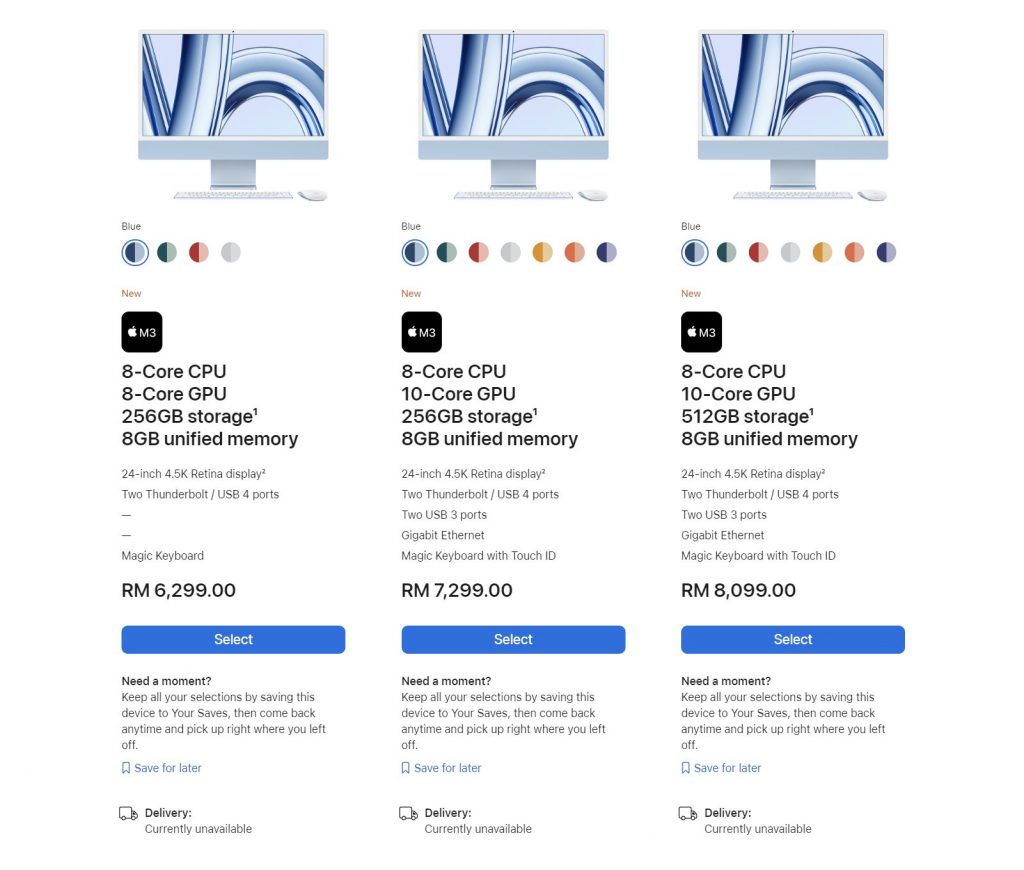
Similar to the previous iMac, the new 24″ iMac 2023 gets the base Apple M3 chip which comes with two GPU core configurations. Here’s the official Malaysian pricing for the three preset options before additional configuration:
- 8-core GPU, 8GB unified memory and 256GB storage – RM6,299
- 10-core GPU, 8GB unified memory and 256GB storage – RM7,299
- 10-core GPU, 8GB unified memory and 512GB storage – RM8,099
With a starting price of RM6,299, the new iMac costs RM700 more than the previous M1-powered version which starts from RM5,599 back in 2021.
With the new Apple M3 chip, you are now able to configure the iMac with up to 24GB of unified memory (M1 supports up to 16GB). To upgrade from 8GB to 16GB will cost you RM800 and it costs another RM800 to jump from 16GB to 24GB of unified memory.
In terms of storage, upgrading from 256GB to 512GB SSD costs RM800 and it’s another RM800 to double up to 1TB. Upsizing from 1TB to 2TB SSD costs RM1,600.
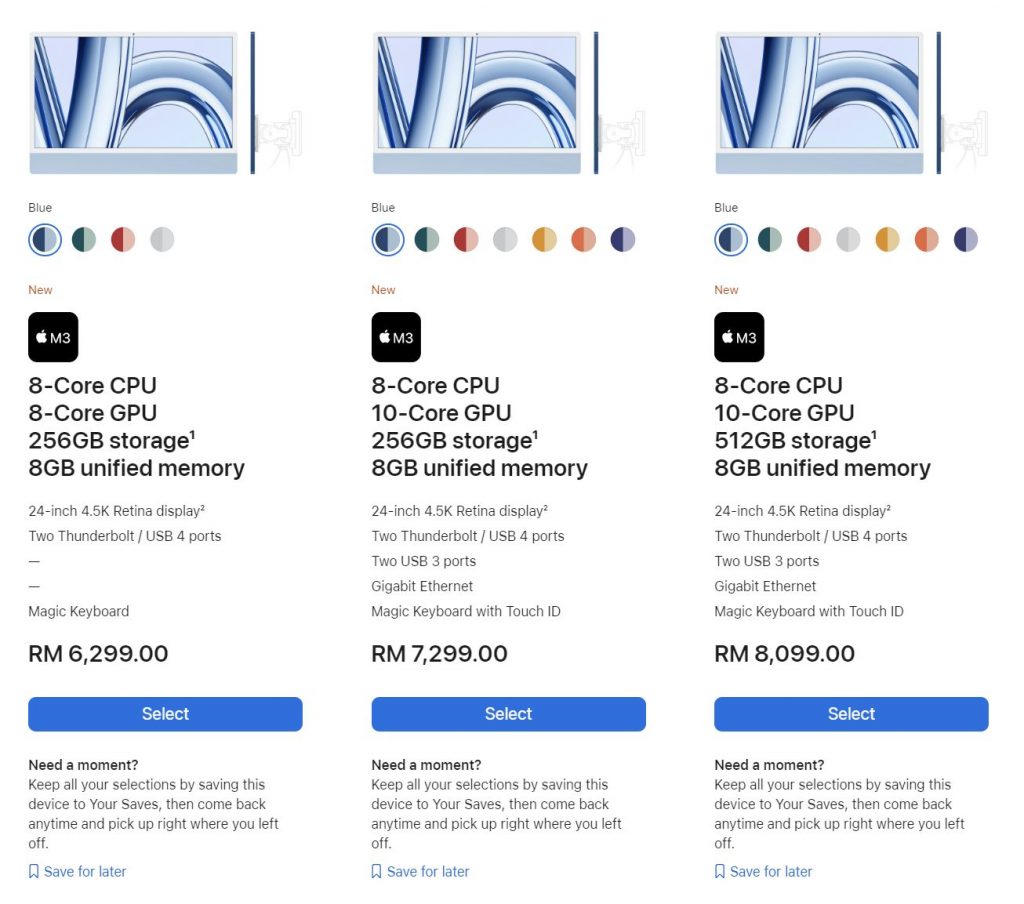
Similar to the M1 version, the new 24″ iMac is also offered with a VESA Mount version if you prefer to mount it to a stand or a wall instead of leaving it standing on your desk.
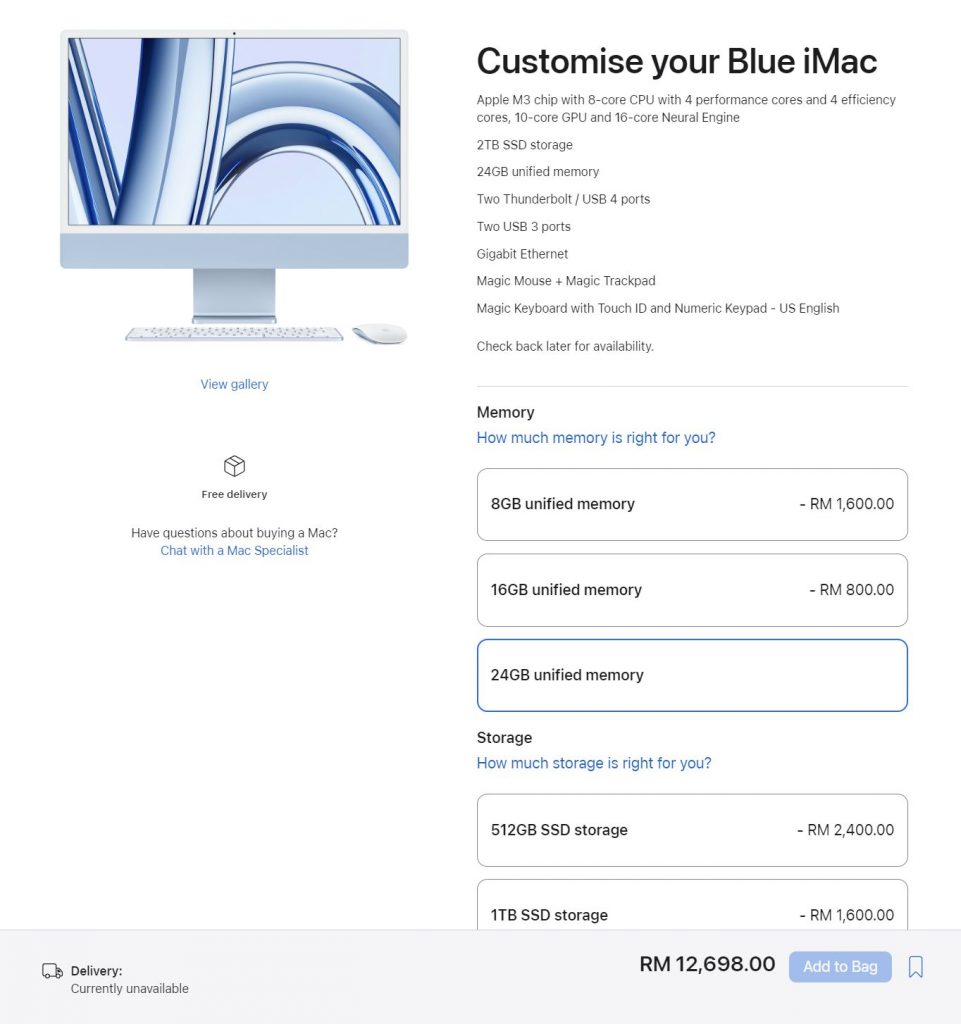
If money is no object, the fully-specced M3-powered 24″ iMac with 10-core GPU, 24GB unified memory, 2TB SSD along with the full Magic Mouse + Trackpad and Magic Keyboard with Touch ID and Numeric Keypad will cost you RM12,698 in Malaysia.
The new 24″ iMac with Apple M3 is still not available for purchase in Malaysia yet but you can customise and save your iMac configuration on Apple’s online store. We expect official local sales to commence in the coming months.
M3-powered 24″ iMac 2023 Malaysia key features
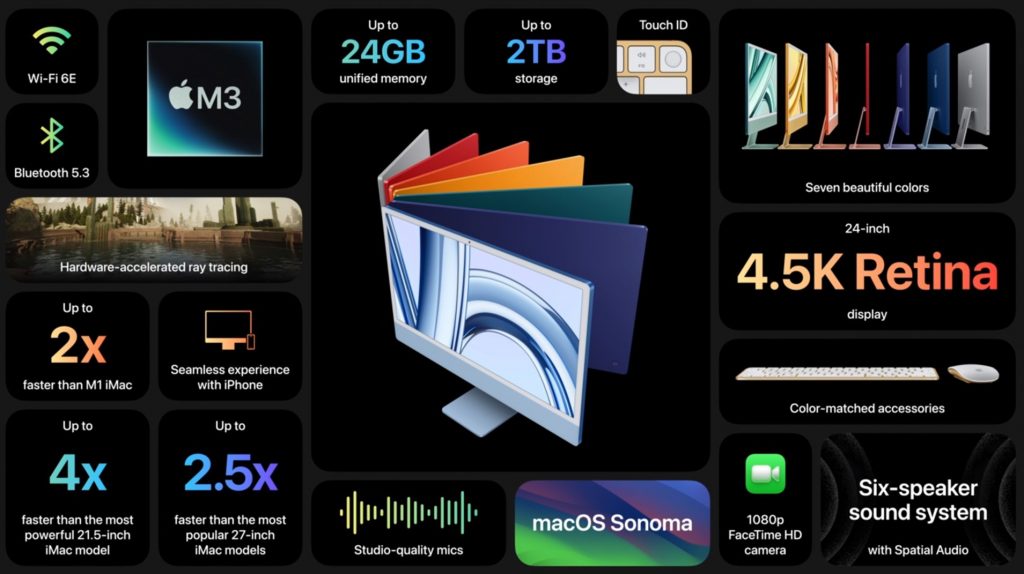
With the M3 chip, Apple claims that the new iMac is up to 2x faster than the previous M1 version. Besides the switch from M1 to M3 chips, the iMac itself remains mostly unchanged. The base model gets fewer GPU codes (8-core vs 10-core) and it only gets two USB-C ports (2x USB 4) instead of four USB-C ports (2x USB 4 + USB 3) on the 10-core version. It still retains a 24″ 4.5K (4480×2520 pixels) Retina Display that boasts up to 500 nits of brightness and features a 1080p FaceTime HD camera.
For audio, it still gets a 6-speaker system with force-cancelling woofers and it also has support for Spatial Audio with Dolby Atmos content. Also included are an array of three studio-quality mics and it still retains a 3.5mm headphone jack. In terms of connectivity, it supports 802.11ax WiFI 6E and Bluetooth 5.3. There’s also support for Gigabit LAN which is offered as an option for the base model.

